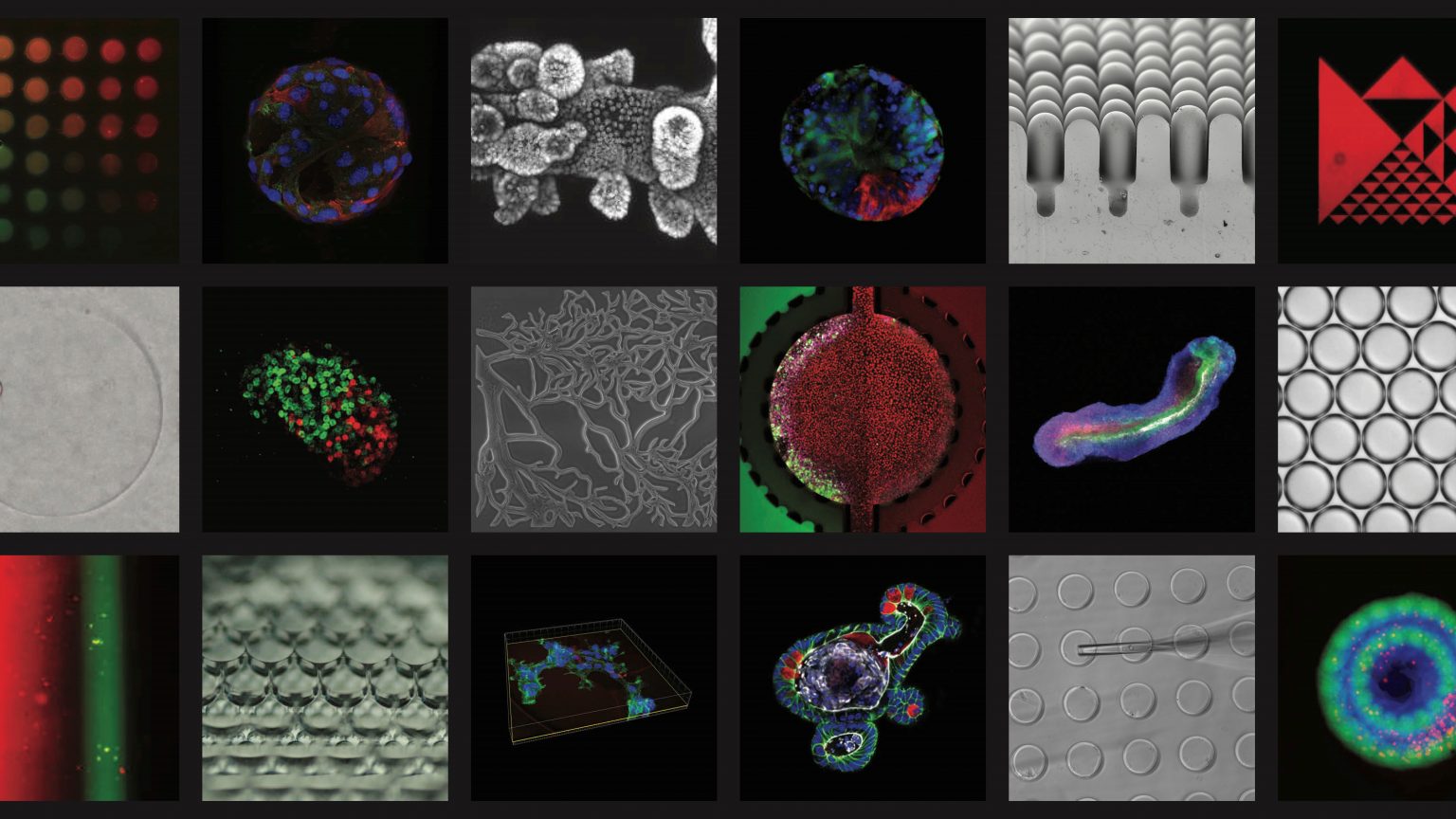LSCB

About us
We are interested in understanding how cells interact with each other and their environment to build tissues and organs. We use miniature organ-mimicking constructs, termed ‘organoids’, as main model systems for our research. Organoids form through ‘self-organization’ processes in which initially homogeneous populations of stem cells spontaneously break symmetry and undergo in-vivo-like pattern formation and morphogenesis, though the processes controlling this are poorly understood. While existing organoids exceed the microscopic and functional complexity obtained by current tissue engineering technologies, they are non-physiological in shape and size and have limited function and lifespan. We use cutting-edge bioengineering strategies for guiding stem-cell-based development for the assembly of next-generation organoids with improved reproducibility and physiological relevance. Beyond contributing to a better understanding of key principles of multicellular self-organization, this research opens up exciting prospects for drug discovery and regenerative medicine.
Selected publications
Rossi, G., Broguiere, N., Miyamoto, M., Boni, A., Guiet, R., Girgin, M., Kelly, R.G., Kwon, C., Lutolf, M.P.*, Capturing cardiogenesis in gastruloids, Cell Stem Cell, https://doi.org/10.1016/j.stem.2020.10.013 (2020)
Brassard, J.A., Nikolaev, N., Hübscher, T., Hofer, M., Lutolf, M.P.,* Recapitulating macro-scale tissue self-organization through organoid bioprinting, Nature Materials, https://doi.org/10.1038/s41563-020-00803-5 (2020)
Nikolaev, M., Mitrofanova, O., Broguiere, N. et al. Homeostatic mini-intestines through scaffold-guided organoid morphogenesis, Nature, https://doi.org/10.1038/s41586-020-2724-8 (2020)
Brandenberg, N., Hoehnel, S., Kuttler, F., Homicsko, K., Ceroni, C., Ringel, T., Gjorevski, N., Schwank, G., Coukos, G., Turcatti, G., Lutolf, M.P.*, High-throughput automated organoid culture via stem-cell aggregation in microcavity arrays, Nat Biomed Eng, doi.org/10.1038/s41551-020-0565-2 (2020)
Manfrin, A., Tabata, Y., Paquet, E.R., Vuaridel, A.R., Rivest, F.R., Naef, F., Lutolf, M.P.*, Engineered signaling centers for the spatially controlled patterning of human pluripotent stem cells, Nature Methods, 16, 640–648 (2019)
Brassard, J.A., Lutolf, M.P.*, Engineering Stem Cell Self-organization to Build Better Organoids, Cell Stem Cell, 24 (6), 860-876 (2019)
Beccari, L., Moris, N., Girgin, M., Turner, D.A., Baillie-Johnson, P., Cossy, A.C., Lutolf, M.P., Duboule, D.* & Martinez Arias, A.*, Multi-axial self-organization properties of mouse embryonic stem cells into gastruloids, Nature, 562 (7726), 272 (2018)
Rossi, G., Manfrin, A., Lutolf, M.P.*, Progress and potential in organoid research, Nature Reviews Genetics, 19, 671–687 (2018)
Gjorevski, N., Sachs, N., Manfrin, A., Giger, S., Bragina, M.E., Ordonez-Moran, P., Clevers, H., Lutolf, M.P.*, Designer matrices for intestinal stem cell and organoid culture, Nature, 539, 560-564 (2016)
Ranga, A., Girgin, M., Meinhardt, A., Eberle, D., Caiazzo, M., Tanaka, E.M., Lutolf, M.P.*, Neural tube morphogenesis in synthetic 3D microenvironments, PNAS, E6831–E6839, doi: 10.1073/pnas.1603529113 (2016)
Caiazzo, M., Okawa, Y., Ranga, A., Piersigilli, A., Tabata, Y., Lutolf, M.P.*, Defined three-dimensional microenvironments boost induction of pluripotency, Nature Materials, 15, 344–352 (2016)
Ranga, A., Gobaa, S., Mosiewicz, K.A., Okawa, Y., Negro, A., Lutolf, M.P.*, 3D niche microarrays for systems-level analyses of cell fate, Nature Communications, 5, 4324 (2014)
Mosiewicz, K.A., Kolb, L., van der Vlies, A.J., Martino, M.M., Lienemann, P.S., Hubbell, J.A., Ehrbar, M., Lutolf, M.P.*, In situ cell manipulation through enzymatic hydrogel photopatterning, Nature Materials, 12 (11), 1072-1078 (2014)
Gobaa, S., Hoehnel, S., Roccio, M., Negro, A., Kobel, S., and Lutolf M.P.*, Artificial niche microarrays for probing single stem cell fate in high throughput, Nature Methods, 8(11):949-55 (2011)